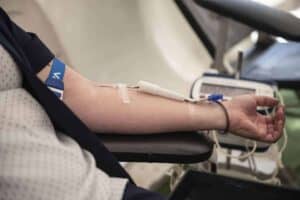Regular, precise and reliable imaging can help save lives through early identification and treatment, but the first crucial step is increasing public awareness of the importance of screening.

On average, one in eight women will develop breast cancer.
Regular, precise and reliable imaging can help save lives through early identification and treatment, but the first crucial step is increasing public awareness of the importance of screening.
Interventional and diagnostic radiologist Dr Peter Schoub, from Parklane Radiology’s Women’s Wellness Centre, said: “Limited breast health diagnosis and treatment facilities on the continent unfortunately mean that for too many people, breast cancer is only detected once it is at a more advanced stage. This can make it harder and, often, more resource intensive, to treat.”
Parklane Radiology has been accredited by the American College of Radiology (ACR) as Africa’s first and only breast imaging centre of excellence.
“While self-examination remains important, more than half of breast cancers cannot be detected by self-examination and mammograms are recommended annually for all women over the age of 40,” Schoub says.
“The ACR assessment for this modality requires detailed quality assurance measures confirming the equipment and practitioners are reliably able to detect extremely small and subtle abnormalities.”
ALSO READ: Breast cancer: a few myths debunked
The ACR process for accreditation as a centre of excellence encompasses all breast imaging modalities – breast magnetic resonance imaging (MRI) and ultrasound, mammography and stereotactic biopsy. A mammogram is an x-ray of the breasts, used to screen for breast cancer.
“We aim to help improve survival rates by encouraging more women to have regular breast screenings and to be aware if their family history and risk factors require closer monitoring,” said Schoub.
If a mammogram indicates abnormal tissue, other types of imaging may be required to reach a diagnosis and provide further clarity on treatment.
“Breast ultrasound is a complementary screening to mammograms which can differentiate fluid-filled cysts from solid lumps,” he said.
“The latest ultrasound equipment we use can also reveal whether a biopsy of a lump is necessary.
“An abnormality that is visible only on a mammogram, which cannot be felt in a physical examination or be seen on ultrasound, has to be targeted for biopsy using the mammogram equipment to guide us.”
The most accurate form of breast imaging is MRI, which can pick up cancers and ductal carcinoma in situ, the most common malignant cause of micro calcifications in breast tissue, undetectable on mammograms or ultrasound.
“For women at higher risk of developing breast cancer, MRI is particularly helpful in detecting aggressive cancers at an earlier stage.
“These scans are also useful for determining the stage of newly diagnosed breast cancers, as well as for further noninvasive exploration where a mammogram and ultrasound are inconclusive,” Schoub added.






